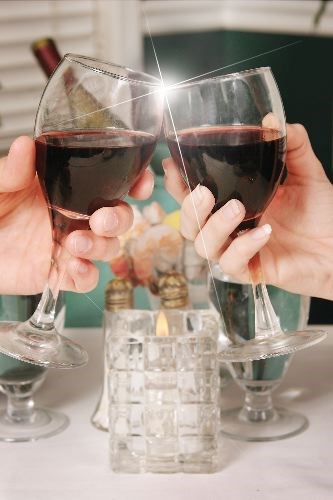Last week, we were talking about cheese so it is fitting to continue this week with wine.
The origins of winemaking are lost to history.
Wine has been part of our diet for at least the past 5,000 years as there are references to wine in Sumerian texts and Egyptian hieroglyphs.
There is some archeological evidence suggesting the production of beer and wine might date back as far as 35,000 years ago.
It is likely naturally occurring fermented fruit was consumed long before our ancestors developed the process.
We are not the only creatures on the planet known to drink alcohol.
Birds often get drunk as do moose.
There are even tales of elephants consuming fermented fruit although the stories seem to have been debunked by more recent studies.
But even some of the monkeys and ape consume alcohol, so it is not surprising our ancestors did so as well.
Sometime in the past, though, humans worked out how to deliberately generate alcohol from fruits and specifically from grapes. The process involves yeast, saccharomyces cerevisiae and the sugars found in the fruit.
Sugars are at the very heart of winemaking and, to a large degree, determine many of the characteristics of the results.
In its simplest form, winemaking consists of yeast consuming sugar (glucose and fructose) and converting the sugar to ethanol, carbon dioxide and energy through their metabolic processes.
By harvest time, grapes are between 15 and 25 per cent simple sugars which is why they taste so sweet and are an ideal starting material for wine.
While the six-membered sugars glucose and fructose are readily fermented by yeast, not all of the other sugars present can be converted.
Five carbon sugars, such as arabinose, rhamnose and xylose, are still present after fermentation and react to give other molecular species.
But the process for making wine is very simple.
The grapes or other fruit are crushed, releasing the sugar content and juices. Yeast is added and allowed to do their work in an anaerobic environment.
When the alcohol content gets too high, the yeast start to die as a result of their own waste product.
There is a lesson in that!
The simplicity of the process is why winemaking is so ancient but wine's popularity likely had something to do with the ability of alcohol to kill micro-organisms. We take clean drinking water for granted but clean water is a recent phenomenon.
For much of Western history, wine has been a much safer drink than water as the alcohol kills microbes. (Tea's popularity in eastern countries arose for much the same reason as boiling water to make tea also sterilizes it preventing disease.)
Wine is not just alcohol and water, though. It is the blend of all of the compounds present which give rise to the distinctive flavours associated with different grape varieties.
A good Merlot is distinguishable from a Pinot Noir by virtue of its complex chemical signature which is a result of both the fermented sugars and a wide variety of other compounds.
A typical glass of wine may contain thousands of chemical species.
Esters, acids, flavonoids, polyphenolics, and other chemical species are found in any glass of wine.
In a young wine, the flavour is dominated by simple acids and sugars.
Young wines tend to be sharp and don't generally appeal to wine lovers. It is only with the influence of air and time that a variety of esters and other compounds are formed.
Aging wine is about developing the strong flavouring agents which give each type of wine its particular bouquet.
An example of just how powerful an ester may be as a flavouring agent is nail polish remover which contains an ester called ethyl acetate.
The odour is both strong and distinct. In the case of nail polish remover, the concentration of this one ester is high.
Within wine, ethyl acetate is just one of many compounds and its distinctive aroma is muted by the combination.
It imparts a sweet taste but it is the combination of a dilute mixture of many different esters which provides the more subtle collective flavour.
Further, esters combine with other flavouring agents, such as the phenolic and acidic components, to produce the complex taste.
Wine tasting itself is a fine art. For example, the glass should never be more than half full.
Swirling the wine allows you to see whether a wine has legs which are a sign of proper aging. To smell the bouquet, you should start well above the glass to catch the lighter, more volatile compounds and then get your nose right into the glass for the heavier notes.
The science of winemaking is just applied chemistry and has been practised for thousands of years.
Making wine is one of our oldest processed foods. But making superior wines should definitely be considered an art.



